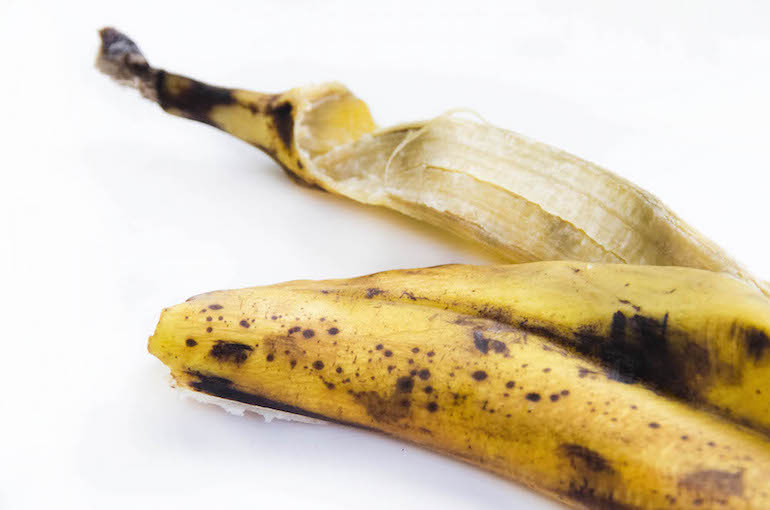You’ve probably heard about the rising popularity of “superfoods” — basically food that’s good for you but usually comes with a hefty price tag. Recently popularized superfoods include chia seeds, maca, coconut oil, quinoa, goji berries, cacao, and… banana peels? Yep, you read that right.
Apparently, people are now eating banana peels and calling them superfoods. How could the toughest, stringy-est, least tasty part of a banana be appetizing? As it turns out, there are actually some potential health benefits to this wacky habit. But do those benefits outweigh the weirdness and the questioning, sideways glances from your friends? Let’s take a look.
As it turns out, banana peels do contain a solid amount of nutrients including:
- Fiber (for a healthy colon)
- Vitamins B6 and B12 (for healthy cells and metabolism)
- Magnesium (for immunity, muscle, and heart health)
- Potassium (for electrolyte balance, nerve transmissions, and steady heartbeats).

Photo by Becky Hughes
Asian cultures typically boil or fry the peel before consumption, but here in the West I’ve heard of juicing them or even adding the peel to smoothies.
Sounds pretty great right? If you toss those bad boys in your fruity morning smoothie, chances are you won’t even taste the difference. But hold on… What’s the catch? I’m glad you asked.
Because bananas are treated with some major pesticides (particularly one called chlorpyrifos), you definitely want to caution eating them too frequently. Go for the organic kind, or at the very least I would recommend washing your peels thoroughly for safer and more healthful banana-peel-meals.
So, should you eat the peel? Absolutely, if you’re bananas about crazy health trends (pun intended) and get a kick out of surprising your friends, then go for it. But is eating the peel necessary to receive tons of health benefits? Not at all. Enjoy your bananas with or without the peel, and you’re sure to get a sweet taste with plenty of balanced nutrients. Stay healthy my friends.


